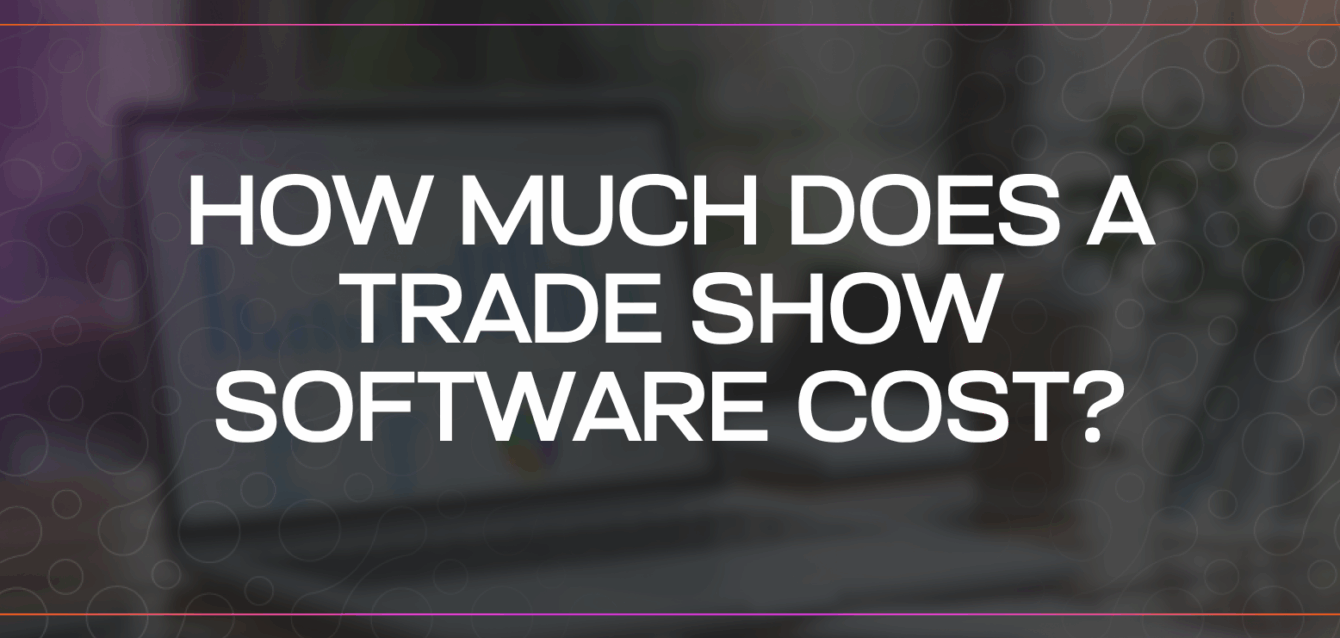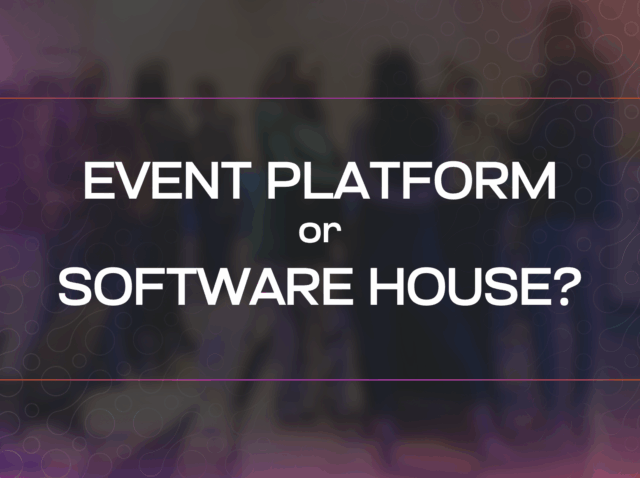Let’s face it: if you work in the trade show industry, sooner or later you’ve probably asked yourself how much trade show software costs.
The question you might not have asked yet is: should I actually start seeing it as an investment instead?
Spoiler: the answer is yes.
When planning a trade show, every budget item needs careful consideration – from logistics and booth setups to catering, staffing, and the venue itself.
And then comes another essential element: the trade show software.
An element that most organisers are now taking into account – as the industry undergoes rapid digital transformation – but which still tends to appear at the bottom of the budget sheet, often with a question mark next to it. Why? Because in many cases, people simply don’t have enough information about it and still see it as an optional extra, something to consider only if there’s budget left over.
But how much does trade show software really cost?
And more importantly – is it really worth the investment?
In this article, we’ll answer one of the industry’s most common questions by looking at real costs (and hidden ones), the main pricing models, and the tangible benefits. Because in the end, the right question isn’t “How much does it cost?” but “How much value does it create?”
Why trade show software is not an optional extra
Let’s start with a mindset shift.
Thinking of trade show software as an optional add-on – something you buy only if you want to offer attendees “a little something extra” – means sticking to an outdated view of event management.
Today, trade show software is a strategic tool, just as crucial as choosing the right venue, selecting exhibitors, or negotiating sponsorship deals.
A well-chosen platform doesn’t just handle registrations or check-ins – it optimises your team’s time, enhances sponsor visibility, collects valuable insights on attendee behaviour, simplifies communication, and gives participants the opportunity to enjoy a truly engaging experience.
Pricing models
The cost of trade show software can vary widely depending on the size and type of your event, the number of attendees, and the features you need.
Broadly speaking, the most common pricing models include:
- Single-event licence – suitable for one-off or annual trade shows. It’s affordable, but the usage is limited in time, and once the event is over, there’s no residual value.
- Annual subscription – ideal for organisers who manage several events throughout the year and want to build a consistent workflow and long-term strategy.
- Modular, tailor-made pricing – fully customisable, where you only pay for the features you select. It’s cost-effective and simple to use, though less flexible if you later decide to upgrade or add functionalities.
Additional factors that can influence pricing include:
- the degree of personalisation required (white label, branding, on-demand features, etc.);
- integration needs with CRMs or third-party tools;
- the number of active users and the level of technical support required.
One of the biggest mistakes organisers make is comparing prices without considering what’s actually included – or the value generated by the activities that can be centralised directly within the trade show software.
Hidden costs vs. invisible savings
While every platform has an upfront price, it also generates hidden savings that can significantly impact your bottom line.
Here are a few examples:
- Fewer tools to manage: one single platform can replace registration forms, databases, access tickets, survey and email tools, gamification apps, video hosts, media libraries, social walls – and potentially much more.
- Reduced errors: unified data management ensures consistent synchronisation and eliminates the need for manual imports and exports. This nearly eliminates human error and the complications that come with it.
- Faster timelines: automation, AI support and digital workflows drastically cut the time needed for each phase, removing repetitive tasks and speeding up the entire organisational process.
- Data reporting: data collection is crucial to assess your show’s success. Trade show software centralises all your analytics and gives you real-time insights into both macro and micro metrics – allowing you to track results with measurable, concrete data.
A real-world example
A B2B company we worked with needed to host an event involving both existing clients and suppliers already in their CRM, and new prospects who were not yet part of their database.
In a typical situation, they would have relied on multiple disconnected tools with different metrics, exporting and merging data manually. Instead, the trade show software streamlined everything.
Key benefits included:
- Centralised registration and participant management, with data automatically synced to the CRM in real time.
- Automatic import and categorisation of existing CRM contacts into the platform.
- Custom newsletters sent directly through the software, segmented and scheduled for maximum impact.
The results? The organisers cut operational time by 40% and increased participant engagement by 25% compared to the previous edition – all without a significant increase in budget.
And what about sponsors?
Trade show software isn’t just for organisers – it’s also a powerful tool for maximising sponsor visibility and ROI.
Imagine what you can offer a sponsor with a custom-branded event app:
- a digital showcase with multimedia content;
- strategic positioning on the interactive floor plan;
- personalised push notifications;
- access to qualified lead collection;
- participation in gamification activities via QR codes.
In a recent trade show managed with LetzFair, sponsors generated an average of 93 qualified leads over a two-day event, thanks to hybrid gamification (using the app within the physical space), in-app messaging, and targeted newsletters.
A remarkable result, considering that in previous editions, sponsors only had logo visibility with inconsistent and untracked outcomes.
Calculating the ROI of your trade show software
Calculating the ROI of trade show software shouldn’t be an abstract exercise – it should be standard practice for every organiser.
Let’s look at a simplified example.
Imagine you invested €4,000 in LetzFair for a corporate trade show. After the event, you assess the following outcomes:
- €8,000 in monetisable leads: thanks to AI-powered matchmaking and smart data collection, you generated new business opportunities worth €8,000.
- €2,000 in operational savings: by reducing the need for multiple tools and manual work, the software cut your management time and operating costs by 20%.
- Higher engagement and attendee satisfaction: participation in sessions and activities increased by +25%, leading to improved satisfaction and stronger loyalty for future events.
Now, let’s calculate the ROI:
ROI = (Total gains – Cost of trade show software) / Cost of trade show software
= (€8,000 + €2,000 – €4,000) / €4,000
= €6,000 / €4,000
= 150% ROI
For every euro invested in LetzFair, you gained €1.50 in value – through both new business and operational efficiency.
And remember: this calculation doesn’t even include intangible benefits like enhanced attendee experience or improved client retention. With those factored in, the ROI would be even higher.
Final thoughts
The real risk today isn’t spending too much on trade show software – it’s not having one capable of evolving with your business.
Relying on fragmented tools, one-time solutions, and temporary fixes means wasting time, money, and opportunities – while risking credibility and falling behind competitors who are already making technology a core part of their strategy.
Trade show software isn’t a cost.
It’s a catalyst for efficiency, growth, and measurable success.







